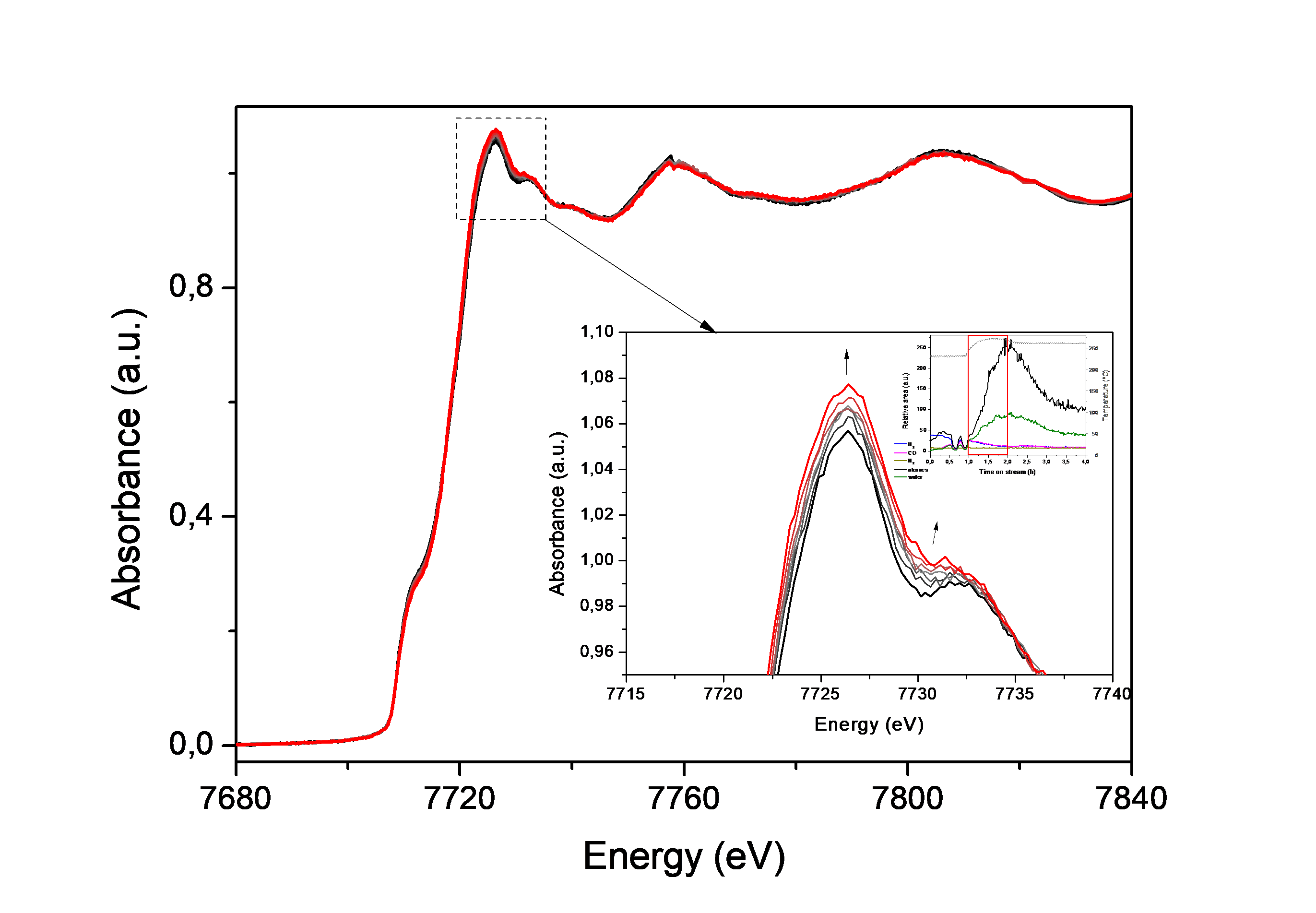The energy crisis driven by the long-term petroleum shortage, the growing demand for cleaner fuels and a more rational utilisation of resources (coal, natural gas, biomass…) are among the main reasons which recently contributed to a major revival of Fischer-Tropsch (FT) synthesis.
The FT reaction consists in producing long-chain hydrocarbons from syngas (composed of a mixture of carbon monoxide and hydrogen) [1]. For the low temperature FT synthesis, the reaction typically proceeds in the presence of a cobalt-supported catalyst heated at 200 - 250 °C and exposed to a total pressure of 10 – 30 bar of a H2/CO mixture. The catalytic properties directly depend on the number, availability and structure of the metallic cobalt active sites. The catalyst deactivation is a major problem and presents many challenges regarding FT synthesis since it results from a combination of numerous processes which are very dependent on the reaction conditions. The improvement of FT catalysts performances requires for establishing a clearer relationship between the activity of the catalyst and its structure at different stages of its life span.
The model 7 wt % cobalt loading catalyst presented about 77 % of metallic cobalt and 23 % of CoO at the end of the activation treatment carried out under pure hydrogen flow (20 mL/min) at 400°C for 10 h. Then the sample was exposed to FT conditions (H2/CO mixture = 2 and 20 bar) at different reaction temperatures and an in-depth time-resolved analysis of the electronic and structural modifications around Co combined with online evaluation of catalyst performances by Raman spectroscopy [2] was carried out at the SAMBA beamline.
First the reaction temperature was slightly increased from 230 to 270°C. This immediately gave rise to a huge increase of the CO conversion rate (76%) towards the formation of methane (68.5 %) as main alkane product (Fig. 1). Concomitantly, an increase of the white line intensity of the XANES spectra was observed (Fig. 2) related to a slight re-oxidation of the catalyst. At the advanced stage under gas stream, while the temperature was successively decreased from 270 to 230°C, the percentage of heavier alkanes (CnH2n+2 with n ≥ 4) increased to reach about 67% at 230°C whereas the CO conversion rate decreased a lot (8%). Concomitantly to this change of catalytic performances, a slight further reduction of the cobalt catalyst with a decrease of the white line intensity was observed.
The Quick-XAS analysis describes the metallic particles as nanocrystalline with sizes (2-4 nm) thermodynamically favourable for re-oxidation processes in presence of water (which is a major product of FT synthesis). The reversibility of the re-oxidation/reduction processes appears mainly driven by the partial pressure in water in the medium, PH2O. It was assumed that a metal core-thin oxide layer like-structure is first formed upon PH2O increase. Then upon decrease of PH2O in the medium and consequently increase of the hydrogen partial pressure, the metallic core particle is regenerated in the reductive atmosphere of the FT reaction.

Evolution of Raman signals for alkanes at different temperatures of FT reactions.

Some normalised XANES of the catalyst between 1 and 2 hours under syngas at 270°C (CO conversion about 76 %).
Reference:
1A.Y. Khodakov, W. Chu and P. Fongarland, Chemical Reviews, 107 (2007) 1692.
2 A. Rochet, PhD thesis Paris Sud, Nov 2011 « Caractérisation structurale des catalyseurs hétérogènes en conditions de fonctionnement par spectroscopie d’absorption des rayons X résolues dans le temps »
